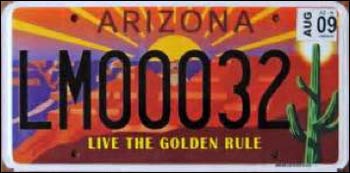By Paul Eppinger
GROWING A GRASSROOTS INTERFAITH PROGRAM
Arizona Interfaith Movement logo
It was a spring day in 1995. The Interfaith Committee of the Arizona Ecumenical Council was discussing how we might make contact with other faith groups in the state. Finally, someone suggested that we try to meet with other groups just to get acquainted. As the executive director of the Ecumenical Council, I sent a letter inviting any who could attend to join us for that initial meeting. Eight different groups came together for that day, and there was an explosion of enthusiasm for what was happening. We fashioned ourselves into a Board of Directors of the newly formed Arizona Interfaith Movement, and that Board has met every month, with the exception of July, for the last 19 years.
One of the first things we did was to develop a mission statement, then a vision statement. Since we were not acquainted with any other interfaith groups, we designed our own statements and the various kinds of membership we would include. We are governed by a basic philosophy that is founded on three concepts.
The first is understanding; seeking to discover what each faith group believes theologically, philosophically, and socially. The next is respect, which means there will be no proselytizing, no criticizing, no dehumanizing of any person or faith. The third is support for all persons who have suffered any kind of religious bias or violence. Those three concepts of understanding, respect, and support govern all that the Arizona Interfaith Movement is and all that it does.
Expanding Programs
The regular activities of the Arizona Interfaith Movement continue to expand and develop. One of the most important is education. We have a monthly “Faith Forum” where we focus on a particular social issue and have a panel made up of various faiths as they share their faith’s insight into that issue. We have made presentations to many different university classes, Rotary Clubs, churches, synagogues, mosques, gurdwaras, and temples.
A second educational experience has been worshipping in the worship centers of different faith groups. We always explain that we don’t want the service watered down to a lowest common denominator; rather we want to worship with that community in the way they regularly worship.
To help educate our youth, we have different youth programs to expand their minds and hearts to understand and respect all faith groups. The youth program has worked to provide food for the hungry of Arizona. On one Saturday, 390 youth gathered to work at the Mormon “cannery” where they bagged 60,500 packages of food that were dispersed to food banks all over the state of Arizona.
A further dynamic thrust of the Arizona Interfaith Movement is the lifting up of the Golden Rule, since it is in the scriptures and teaching of every major faith. We have developed a curriculum for the teaching of the Golden Rule in private and public schools across the state of Arizona.
Funding Grassroots Interfaith
But how do we pay for these programs and fund our three-person staff? We have four arenas that fund our work.
The first is individual donations. Our board, consisting of two people from every faith group, is encouraged to make contributions. Some can only afford ten dollars a year. Other board members give several thousand a year, but it helps all of our fundraising when we can say that 100 percent of our board members share in financial contributions.
Golden Rule Banquet 2014 – Photo: Facebook
A second source of income is the sale of our books. We have published three books: Voices of Faith I gives the history and basic tenants of 12 of our faiths; Voices of Faith II includes 8 different faiths; and Interfaith Inspirations, which is a daily devotional book on 52 different topics, with a faith contributing scripture from their tradition, brief comments, and a closing prayer. Twenty-two different faith groups contributed to the text.
A third source of income is our annual Golden Rule Banquet. We have found the Golden Rule is in the scripture and teaching of every faith group, so every year we honor six to eight people or groups who are living out the GoldenRule. This year nearly 900 people gathered for this celebration, and profits from the sale of the tickets and two dozen businesses and groups that underwrote the Banquet from $1,000 to $10,000 each, gave us a profit of about $50,000.

A fourth source of income is our Golden Rule license plate program. In Arizona, it is possible for organizations to develop special license plates which publicize their cause. State universities, child abuse prevention programs, and several other groups have realized the benefits of this program. In 2005, The Arizona Interfaith Movement initiated the process for developing these traveling billboards for the Golden Rule. The state produces and sells the plates for $25 for each different organization. The state then keeps $8 for each plate and sends the organization $17 per license plate sold. With 12,000 to 14,000 plates on Arizona highways, that factor has become a major source of our income.
With the deep conviction that the cutting edge in religious life across the planet is interfaith relationship, the Arizona Interfaith Movement is committed to deepen and expand interfaith relations locally, nationally, and internationally. We invite all to join us this exciting venture.



